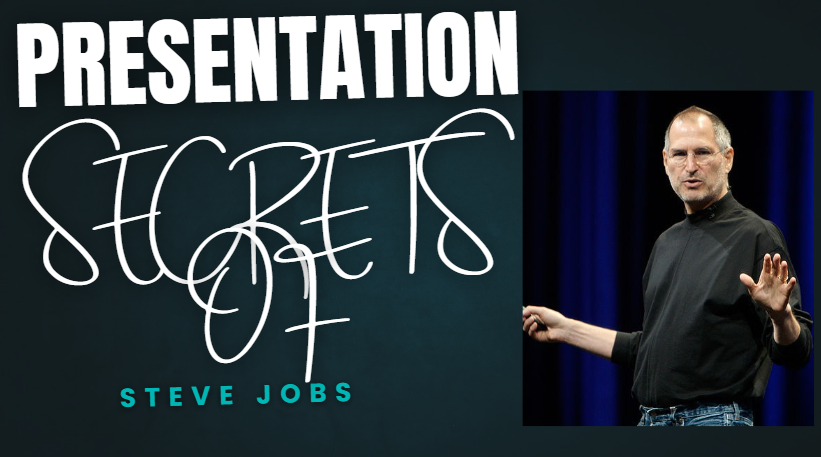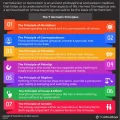
1. What is the core philosophy behind Steve Jobs’s presentation style?
Jobs’s communication philosophy centers on captivating audiences through storytelling, clarity, and passion. He believed in simplifying complex ideas, focusing on the core benefit to the audience (“Why should I care?”), and creating a “must-have” experience through carefully chosen language. He also understood the importance of visual aids in solidifying the message. The book highlights his relentless focus on improvement and crafting a presentation style that is both theatrical and engaging.
2. How did Steve Jobs utilize storytelling in his presentations?
Jobs emphasized the importance of a clear narrative structure in his presentations, similar to a play with acts and scenes. He would often introduce an “antagonist” (e.g., IBM, confusing technology) to create a problem that his product (“hero,” e.g., iPod) would solve. This approach provided context and meaning for the audience before diving into specific details. He was also known for including personal anecdotes and “holy shit” moments to create emotional connections with the audience.
3. What role did simplicity play in Steve Jobs’s presentations and product design?
Simplicity was a cornerstone of both Jobs’s presentations and Apple’s product design. He believed in reducing complexity and jargon to ensure that the core message resonated with the audience. This translated into clear, concise headlines (ten words or less) and product descriptions focusing on the core benefit, like “1,000 songs in your pocket” for the iPod. It also influenced the clean and intuitive design of Apple products.
4. How did Jobs use numbers and statistics effectively in his presentations?
Jobs understood that raw numbers often lacked impact unless they were contextualized. He made numbers specific, relevant, and contextual to his audience by using analogies and comparisons that they could easily understand. For example, instead of just saying “30 GB of storage,” he might explain what that meant in terms of the number of songs or photos the device could hold.
5. What was the significance of the “Rule of Three” in Steve Jobs’s approach to communication?
Jobs often structured his presentations around the “Rule of Three,” presenting information in groups of three key points. This technique made it easier for the audience to follow the narrative and remember the main takeaways. Whether he was introducing three revolutionary products (iPhone, widescreen iPod, internet communicator) or highlighting three key features of a product, this structure provided clarity and memorability.
6. What techniques did Steve Jobs employ to create memorable “Holy Shit” moments in his presentations?
Jobs built anticipation and suspense by slowly revealing key features and benefits, culminating in a “Holy Shit” moment that surprised and delighted the audience. He understood the importance of timing, saving the biggest announcement for last. By carefully crafting the build-up and delivery, he ensured that the big reveal had maximum impact and created a lasting impression.
7. How did Jobs use partners on stage to enhance the credibility and impact of his presentations?
Jobs strategically invited partners, such as CEOs of other companies or members of his own design team, to share the stage with him. This provided credibility and validated Apple’s claims by showing that other industry leaders and experts endorsed the company’s products and vision. It also added variety and excitement to the presentation.
8. What were some key elements of Steve Jobs’s stage presence and delivery?
Jobs was a master of stage presence, using body language, vocal delivery, and pauses to captivate his audience. He made direct eye contact, used expressive gestures, and varied the volume and inflection of his voice to maintain attention. Well-placed pauses added drama and allowed key points to sink in. He was also known for his energetic and enthusiastic delivery, reflecting his passion for Apple products.
Quiz
Answer the following questions in 2-3 sentences each, based on the provided text.
- What is the “one question that matters most” that presenters should answer for their audience?
- Explain the “Napkin Test” in the context of developing a clear vision.
- According to the book, what is the primary benefit of using a road map with three points in a presentation?
- What is the purpose of introducing an “antagonist” early in a presentation, according to the book?
- Explain the “picture superiority effect” and its relevance to presentation design.
- Describe how Steve Jobs “dresses up” numbers to make them more interesting and impactful for the audience.
- What is the “holy shit” moment and why is it important in a presentation?
- Give an example of how Steve Jobs used a pause to enhance his presentation’s impact.
- What was unique about Steve Wozniak that helped him screw up TV signals?
- According to the book, what is anaphora, and what is its purpose in delivering speeches?
Quiz Answer Key
- The “one question that matters most” is, “Why should I care?” This question forces presenters to articulate the benefit and relevance of their information to the audience’s needs and interests, making the presentation more engaging and effective.
- The “Napkin Test” signifies the ability to distill a complex vision into a simple, easily understandable concept, often able to be written on a napkin. It emphasizes the importance of clarity and conciseness when communicating a core idea.
- Using a road map with three points makes it easier for the audience to follow the narrative and retain information. It helps organize the presentation into manageable chunks, preventing cognitive overload and improving comprehension.
- Introducing an “antagonist” early provides the audience with context and a framework for understanding the new idea. It creates a “bucket” or category in which to place the information, making it more meaningful and memorable.
- The “picture superiority effect” highlights that visuals are more easily remembered than words. In presentation design, using images instead of bullet points strengthens mental connections and improves audience recall.
- Steve Jobs “dresses up” numbers by making them specific, relevant, and contextual to the audience. He compares them to familiar concepts or everyday experiences, allowing the audience to grasp the magnitude or significance of the data.
- The “holy shit” moment is a memorable and impactful revelation that leaves a lasting impression on the audience. It is a pivotal point that evokes emotion and solidifies the message of the presentation.
- Jobs uses pauses to build suspense and emphasize key points. He will often pause briefly before delivering a headline or revealing a significant piece of information, allowing the audience to anticipate and absorb the impact of his words.
- Steve Wozniak possessed deep technical knowledge that allowed him to create a device capable of disrupting television signals. His antics demonstrated a playful and rebellious spirit, and this helped him create the Apple II computer.
- Anaphora is the repetition of the same word or words in successive sentences. In delivering speeches, it serves to structure strong arguments, emphasize key themes, and create a memorable and persuasive impact on the audience.
Essay Questions
- Discuss the importance of storytelling in presentations, according to Carmine Gallo, and provide specific examples of how Steve Jobs used storytelling to captivate his audience.
- Analyze Steve Jobs’ communication style, identifying key elements such as his use of language, body language, and stage presence, and explain how these elements contributed to his effectiveness as a presenter.
- Explain the principles of minimalist design, specifically concerning slide creation, as they relate to effective communication. How does removing clutter help to clarify and emphasize your message?
- Describe the role of passion and purpose in effective communication, as highlighted in the book. How can a speaker’s genuine enthusiasm for their subject influence the audience?
- Evaluate the ethical considerations of using persuasive techniques in presentations. Is it possible to be both persuasive and authentic, or are these qualities mutually exclusive?
Glossary of Key Terms
- Anaphora: Repetition of a word or phrase at the beginning of successive clauses, sentences, or lines for emphasis and rhetorical effect.
- Antagonist: A person or force that opposes the hero, giving context and meaning.
- Buzzwords: Trendy or technical words or phrases often used without precise meaning, making communication unclear.
- Cognitive Overload: A state in which the brain is overwhelmed by the amount of information it is processing, hindering comprehension and retention.
- Contiguity Principle: The concept that elements presented close together in space or time are perceived as related.
- “Holy Shit” Moment: A memorable and impactful revelation that leaves a lasting impression on the audience.
- Inflection: Modulation of pitch or tone of the voice.
- iPod: Apple’s portable media player, initially released in 2001.
- iTunes: Apple’s media player, media library, and online store.
- Jargon: Specialized or technical language specific to a particular field, profession, or group, often unintelligible to outsiders.
- Kinesthetic Learners: People who learn best through hands-on activities and physical experiences.
- MacBook Air: Apple’s line of ultrathin laptop computers.
- Multimedia Presentation Principle: The concept that people learn better from words and pictures than from words alone.
- Napkin Test: A concise and simple test of whether or not the business idea can be easily understood.
- One-Liner: The description of a product in a single sentence.
- Picture Superiority Effect: The phenomenon that pictures are more easily recognized and remembered than words.
- Petaflop: One thousand trillion calculations per second.
- Road Map: An outline of a presentation, typically consisting of three main points, to guide the audience.
- Rule of Three: A principle suggesting that things that come in threes are inherently more appealing, memorable, and effective.
- Storytelling: The art of conveying events in words, images, and sounds, often with an intended message or moral.
- Ten-Minute Rule: The need to provide breaks in presentations every ten minutes.
- Ten-Thousand-Hours Theory: An idea that suggests mastery of a skill requires 10,000 hours of deliberative practice.
- Virtulization: A method of portioning a physical server computer into multiple servers such that each has the appearance and capabilities of running on its own dedicated machine.


















0 responses on "Presentation Secrets of Steve Jobs: How to Be Insanely Great in Front of Any Audience"